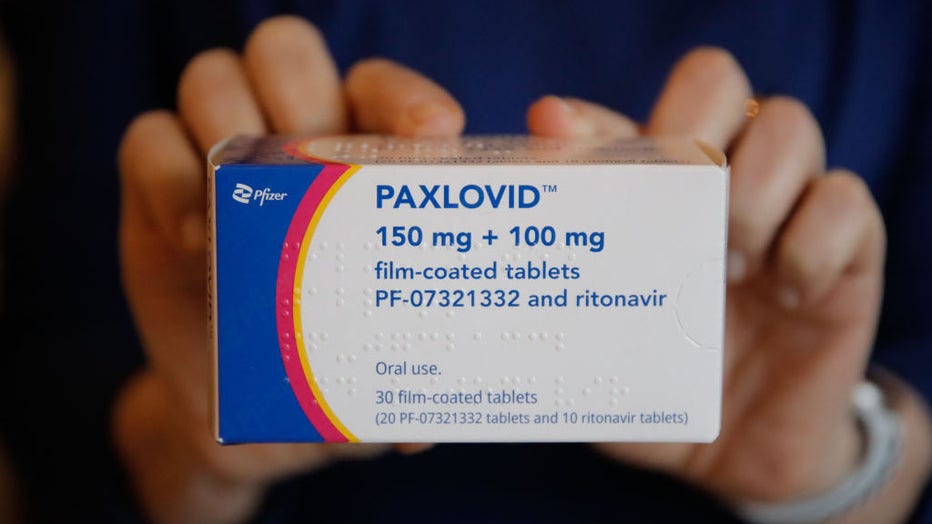COVID-19 rebound reported after Pfizer’s pill Paxlovid, CDC says
The U.S. Centers for Disease Control and Prevention issued an alert Tuesday to update healthcare providers about the potential for COVID-19 to reoccur, or "rebound," after the use of Paxlovid.
Paxlovid is Pfizer’s powerful COVID-19 pill and has become the go-to option to treat COVID-19 because of its at-home convenience and impressive results in heading off severe disease. It has been shown to cut the risk of COVID-19 hospitalization or death by up to 90%.
The CDC said Tuesday that COVID-19 rebound has been reported to occur between two to eight days after initial recovery from the virus. The "rebound" could be characterized as COVID-19 symptoms reemerging and/or testing positive again after having already tested negative.
The CDC didn’t say how many rebound cases had been reported.
The CDC said those initially treated with the pill who experience rebound COVID had mild illness.
"There is currently no evidence that additional treatment is needed with Paxlovid or other anti-SARS-CoV-2 therapies in cases where COVID-19 rebound is suspected," the CDC stated.
Additionally, the CDC stressed that Paxlovid’s five-day regimen of pills is still recommended for early-stage treatment of mild to moderate COVID among persons at high risk for severe disease.
Paxlovid was authorized in December based on a study in which 1,000 adults received the medication. It was OK’d based on its performances against the delta variant of COVID and may be less potent against the current omicron variant.
The U.S. government has spent more than $10 billion to purchase enough pills to treat 20 million people.
RELATED: US sees risk of 'dire' COVID supply, rationing without more funding
Who should take Paxlovid?
The CDC states the drug reduces the risk of hospitalization and death for patients who are at risk of disease progression and severe illness.
Persons eligible to take Paxlovid:
- Have tested positive for COVID
- Have mild to moderate illness
- Have one or more risk factors for progression to severe disease
- Have no need for current hospitalization at the time of treatment
- Have no evidence of severe renal or hepatic impairment
Paxlovid should be taken as soon as possible, within five days of symptom onset. The regimen consists of three pills taken twice a day for five days.

A photo illustration of a box of Paxlovid, the Pfizer COVID-19 drug (Photo By Europa Press/C.Lujan. Pool via Getty Images)
RELATED: COVID-19 vaccine for kids under 5: Pfizer says 3 small doses offer strong protection
Who is susceptible to COVID relapse?
The CDC said a brief return of COVID symptoms may be part of the virus’s natural history in some people, regardless of their vaccination status or use of Paxlovid.
Both the FDA and Pfizer have pointed out that 1% to 2% of people in Pfizer’s original study saw their virus levels rebound after 10 days. The rate was about the same among people taking the drug or dummy pills, "so it is unclear at this point that this is related to drug treatment," the FDA stated.
Possible commonalities between those who experienced relapse were not reported.
What is the risk of COVID relapse?
Earlier this month, the Food and Drug Administration advised persons with rebound COVID against a second round of Paxlovid treatment because there’s little risk of severe disease or hospitalization among patients who relapse. The CDC agrees and says patient monitoring is the best course of action during COVID rebound.
The CDC said possible transmission of infection during COVID rebound has been described, but researchers are still figuring out if the likelihood of transmission during rebound differs from the likelihood of transmission during initial infection.
People with COVID rebound should follow CDC recommendations regarding isolation.
Those who have taken Paxlovid and have a possible case of COVID-19 rebound are encouraged to report the case to Pfizer via an online tool.
This story was reported from Detroit. The Associated Press contributed.

